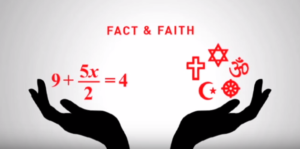Quantum describes nature at the smallest scales of energy levels of atoms and subatomic particles.
In 1905 Einstein provided proof of the then controversial idea that matter is composed of atoms. After all sold is solid right? We can see, feel, taste, and touch reality. Sometimes hear it. The atomic bombs of 1945 convinced the world of atoms.
This lead to wave-particle duality and many discoveries in quantum physics that contradict the collection of thoughts our civilization had about what is reality
Quantum subjects reputation of great difficulty, complexity, and understanding of higher mathematics is in part due to the resistance many have to the concepts.
Classical physics is built upon that what can established with our physical senses. It is what our parents and school taught us. Once we are willing to abandon that, Quantum physics is not that hard to understand.
Quantum describes nature at the smallest scales of energy levels of atoms and subatomic particl

es. For those interested in Climate change, the greenhouse effect is also quantum in nature.
For some of us, Quantum understanding provides a structure to understand things we have experienced in our life but not understood.
Non-locality was proposed in 1965 and since then proven. Non-locality describes the apparent ability of objects to instantaneously know about each other’s state, even when separated by large distances (potentially even billions of light years),
How many accept that?
Non-locality and embedded theory is comforting to some of us who have not understood experiences such as ESP, out-of the body, telepathy. and other events that were once referred to as psychic or paranormal.
Reputable research (Gallop and Readers Digest) show a majority of Americans (up to 76%) believing in some form of paranormal activity while less than one quarter report having experienced a paranormal event. ( I was surprised that Christians are a little more likely to believe than non-Christians (75% vs. 66%, respectively), but both groups show a sizeable majority with such beliefs.)
Today our scientists have learned the atomic world we thought was real is only 3% of reality. Can you accept that?